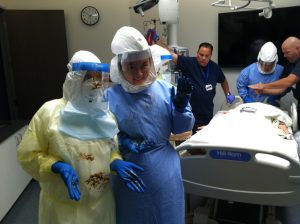Long-term clinical, psychosocial, and viral outcomes in Ebola survivors in Guinea.
January 19th, 2017Multidisciplinary assessment of post-Ebola sequelae in Guinea (Postebogui): an observational cohort study. Etard, Jean-François et al. The Lancet Infectious Diseases
Findings
Between March 23, 2015, and July 11, 2016, we recruited 802 patients, of whom 360 (45%) were male, 442 (55%) were female; 158 (20%) were younger than 18 years. The median age was 28·4 years (range 1·0–79·9, IQR 19·4–39·8). The median delay after discharge was 350 days (IQR 223–491). The most frequent symptoms were general symptoms (324 [40%] patients), musculoskeletal pain (303 [38%]), headache (278 [35%]), depression (124 [17%] of 713 responses), abdominal pain (178 [22%]), and ocular disorders (142 [18%]). More adults than children had at least one clinical symptom (505 [78%] vs 101 [64%], p<0·0003), ocular complications (124 [19%] vs 18 [11%], p=0·0200), or musculoskeletal symptoms (274 [43%] vs 29 [18%], p<0·0001). A positive RT-PCR in semen was found in ten (5%) of 188 men, at a maximum of 548 days after disease onset. 204 (26%) of 793 patients reported stigmatization. Ocular complications were more frequent at enrolment than at discharge (142 [18%] vs 61 [8%] patients).
Interpretation
Post-EVD symptoms can remain long after recovery and long-term viral persistence in semen is confirmed. The results justify calls for regular check-ups of survivors at least 18 months after recovery.



